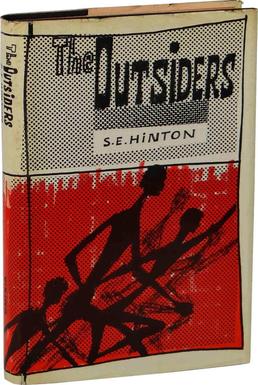History of the YA Genre

While literature has always existed that appealed to younger audiences, the “Young Adult” genre as we know it today did not begin to develop until the mid-20th century. During this time, research over adolescence expanded, and adolescents from ages 12 to 18 became a distinct market apart from the classifications of children’s and adult literature. A major contributor to this movement was S.E. Hinton’s The Outsiders, published in 1967. Since then, Y.A. fiction has flourished into a thriving genre that attracts readers of all ages.
Despite its popularity, the exact function of Y.A. literature is often disputed. It is usually used as a bridge by which young readers are able to transition from children’s books to complex adult novels. However, disagreement often erupts over how much of the “adult world” to represent in these works; some think the genre should represent longer and more complex plots and language rather than attempt to prepare its readers for different life experiences. Naturally, this makes young adult books prone to much censorship and challenge.
Controversy and Censorship
Unlike literature for adults, books written for children and young adults face challenges from many sides. In addition to the stakeholders of authors, publishers, and readers, these works face the criticism of parents, teachers, members of the community, and school district administrations. It is this many-faced critical situation that allows for clashing ideologies and worldviews, making children’s literature especially political and divisive.
Most challenges to young adult fiction come from parents like the Whittier Middle School complainant. In her essay, “Politics in Children’s Literature,” education scholar Belinda Louie suggests: “When parents want an offensive book removed, they are asking that an overall worldview not be brought into the lives of their children.” This can certainly be said of the Glass case, which handles a worldview that is likely quite different than that of Whittier’s students: the worldview and perspective of a drug addict and teen mother.
Louie, Belinda. “Politics in Children’s Literature: Colliding Forces to Shape Young Minds” Shattering the Looking Glass: Challenge, Risk, and Controversy in Children’s Literature, edited by Susan S. Lehr, Christopher-Gordon Publishers, 2008, pp. 3-13.
Michaud, Jon. “S.E. Hinton and the Y.A. Debate.” The New Yorker, 14 October 2014.
Image credit:
“The Outsiders (1967) First Edition.” Wikipedia.org, published 28 Apr. 2015.
